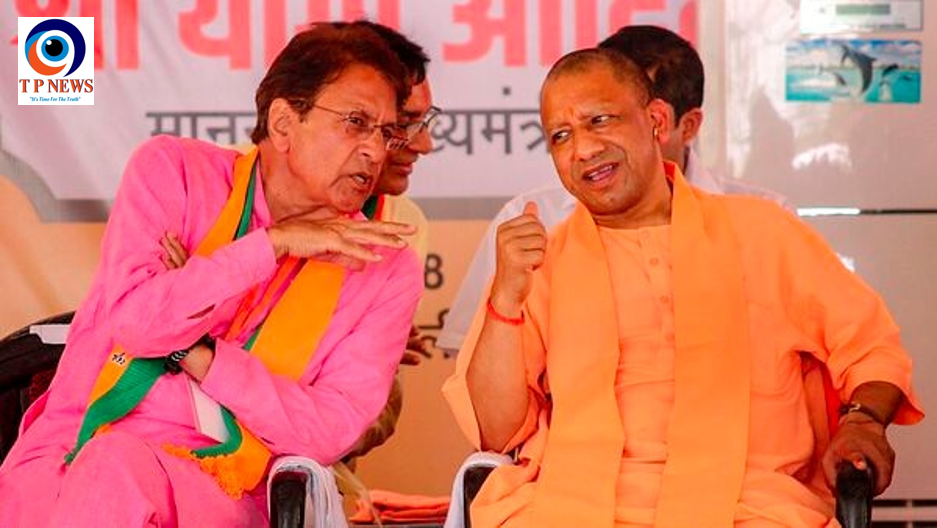As the counting for the Lok Sabha Elections 2024 continues, it has become evident that the Bharatiya Janata Party (BJP) is struggling to secure a majority on its own. The INDIA bloc, a coalition of opposition parties formed to challenge the BJP, has gained significant ground, leading in 228 seats — a stark contrast to the exit polls that predicted less than 200 seats for them. In 2019, the BJP had secured a robust 303 seats independently, while the National Democratic Alliance (NDA) amassed 353 seats. Here are five critical factors that appear to have contributed to the BJP’s faltering performance this time around:
1. The Uttar Pradesh Shocker
One of the most unexpected developments has been in Uttar Pradesh, a crucial state for the BJP, where the INDIA bloc has won 40 of the 80 seats. This is a significant drop from 2019, when the BJP captured 62 seats in the state. The BJP’s campaign strategy heavily relied on large rallies featuring Prime Minister Narendra Modi, Chief Minister Yogi Adityanath, and Union Home Minister Amit Shah. In contrast, Congress General Secretary Priyanka Gandhi Vadra adopted a grassroots approach, camping in Rae Bareli and Amethi, focusing on small, community-based meetings rather than grandiose rallies.
Political analysts have noted that the BJP’s decision to repeat many of its incumbent MPs, unlike its strategy in Delhi where it replaced all but six sitting MPs, might have contributed to voter fatigue and dissatisfaction.
2. Ram Mandir Campaign
The construction of the Ram Mandir in Ayodhya was a cornerstone of the BJP’s campaign, expected to galvanize support. However, the issue did not seem to resonate with the voters as anticipated. This is exemplified by the BJP trailing in the Faizabad constituency, which encompasses Ayodhya. In neighboring constituencies, the BJP is leading in only two out of seven seats. The Congress is leading in Amethi and Barabanki, while the Samajwadi Party (SP) is ahead in Sultanpur, Ambedkarnagar, and Basti. Both Congress and SP are part of the INDIA bloc.
3. The Agnipath Scheme
The Agnipath scheme, aimed at recruiting soldiers, has faced severe criticism, particularly from Congress leader Rahul Gandhi. This scheme appears to have negatively impacted the BJP’s performance, especially in Rajasthan and Haryana, states that contribute significantly to the defense and paramilitary forces. In Haryana, where the BJP swept all ten seats in 2019, the party is now leading in only five, with the Congress ahead in the other five. Similarly, in Rajasthan, the BJP+ alliance, which had won all 25 seats in 2019, is leading in just 14, with Congress ahead in eight.
4. Splits in Maharashtra
In Maharashtra, the BJP has encountered setbacks, leading in only 12 seats compared to the 23 seats it won in 2019. The Congress is leading in 11 seats, while the Shiv Sena (Uddhav Thackeray faction), an INDIA bloc partner, is leading in ten seats. The Eknath Shinde faction of Shiv Sena, aligned with the BJP, is leading in six seats. The split within Shiv Sena in 2022 and the Nationalist Congress Party (NCP) in 2023 has seemingly confused and disillusioned voters. Delays in announcing NDA candidates and ongoing Maratha agitations for reservations in education and government jobs have also played a role in the BJP’s diminished performance.
5. Turncoats
Several Congress members who switched allegiance to the BJP have not fared well in the elections. In Punjab, Ravneet Bittu and Preneet Kaur, both Congress defectors, are trailing. Similarly, in Haryana, Ashok Tanwar, who joined the BJP just before the elections, is also trailing in the Sirsa constituency. These defections seem to have backfired, with voters possibly perceiving them as opportunistic rather than genuine representatives of change.
Conclusion
The 2024 Lok Sabha elections have revealed significant challenges for the BJP, from strategic missteps in key states like Uttar Pradesh to the repercussions of controversial policies such as the Agnipath scheme. Additionally, internal splits within allied parties in Maharashtra and the poor performance of turncoat candidates have further dented the BJP’s prospects. As the results continue to roll in, it is clear that the party will need to undertake a thorough introspection and recalibrate its strategies to regain its footing in Indian politics.








